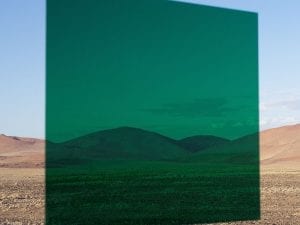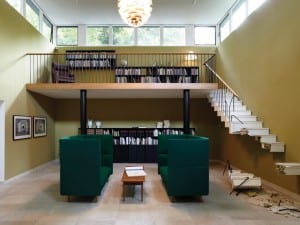The Hayward Gallery has reopened post-refurbishment with a prodigious exhibition by German photographer Andreas Gursky. Approximately 70 works are featured in this lifetime survey aptly displayed within the brightened spaces of the brutalist building. According to Ralph Rugoff, Director of The Hayward, the austerity of the photographer’s work is enhanced by its context of the modernist raw concrete architecture. The oversized photographs, which can be as large as 12 feet wide, are given space for viewers to reflect on each one and to explore Gursky’s encyclopaedic depiction of life from across the globe.
Gursky has become one of the most well known image-makers of our contemporary era. His photographic works are a remit of his rhetoric, portraying scenes as serene as a riverbed in Rhine II (1999/2015) and as chaotic as a trading floor in Chicago Board of Trade III (2009) or a 99p store in 99 Cent II, Diptych (2001). What may seem like exceptionally beautiful naturally shot photographs at first glance, are actually productions of multiple images manipulated into perfect compositions. Gursky uses digital technology to compile his reflections on life into their grand scale in an almost abstract portrayal, loaded with similarly grand themes of capitalism, commerce, and environmental decline.
Gursky’s photographs have the ability to transcend something as bland as grey carpet tiles in an office, such as in Untitled #1 (1993), to appear as if it is a majestic foggy seascape. The orange cable car in Dolomites, Cable Car (1987) hovers between the mountains, suggesting it is a heading to a mysterious destination beyond. In contrast, the vast and vibrant aisles of the distribution centre in Amazon (2016) and the curiously empty display shelves in the pastel-colored photograph Prada II (1997) are candy-coated in symbolic consumerism, but share the sense of intrigue. Hundreds of party-goers from Germany’s Mayday techno-music festival are tiled together in May Day IV (2000/2014), although with each individual in fine focus. A block of flats in Paris, Montparnasse (1993) is more than a snap from across the street, the collaged images are a capture of the mass housing without any skewed angles.
In his new work, Gursky is still photographing housing but with a new approach. In a single shot from his mobile phone, Gursky snapped prefabricated houses on a drive through the state of Utah. The blown-up, blurred photograph communicates more than the fleeting objects against a backdrop of age-old mountains. Deemed as a masterpiece of the exhibition, this work is voicing the significant effect mobile phones are playing in today’s contemporary society.
A number of photographs in the exhibition have a familiar feeling, perhaps attributed to the overwhelming amount of visual stimuli easy accessed or bombarded into our lives each day. In this survey, Gursky reminds audiences of the power of the image, although Susan Sontag may argue it encourages a chronic voyeuristic relation to the world around us. Within our current culture that is so reliant on mobile phones, the Hayward offers the opportunity to pry eyes from the phones to physical photographs, to see, amongst a generous array of captivating imagery, the result of what an iconic artist such as Gursky has captured with his own device.
Ashton Chandler Guyatt
Andreas Gurksy is at the Hayward Gallery, Southbank Centre until 22 April. For more information, click here.
Credits:
1. Andreas Gursky, Les Mées, 2016. C-Print. 220.9 x 367.2 x 6.2 cm. © Andreas Gursky/DACS, 2017. Courtesy: Sprüth Magers.





